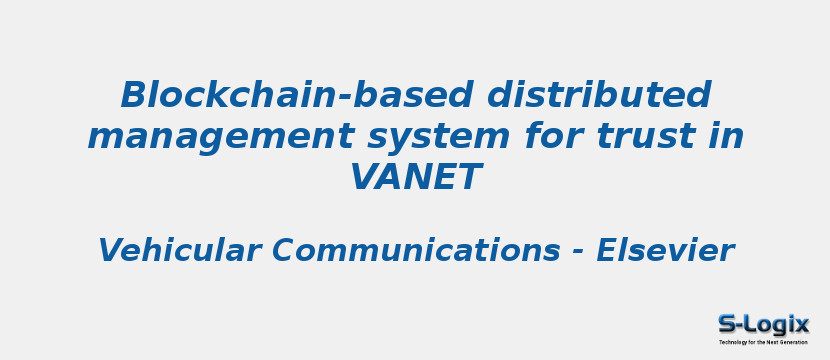Research Area: Vehicular Ad Hoc Networks
Blockchain technology is gaining a lot of ground as a research topic lately. Wireless ad hoc network researchers are studying and applying blockchain to solve security and reliability issues. Blockchain is a distributed database maintained by multiple nodes in the network, and it is used as a solution to trust and security issues. Within a vehicular ad hoc network (VANET), vehicles provide mutual road safety by generating and broadcasting messages. However, due to the lack of trust in these networks, the reliability of the messages exchanged is questionable. To alleviate this problem, reputation systems have been proposed. Howbeit, these systems require trust and rewards management. Due to the characteristics of VANET, most safety systems require repetitive processes that have a direct impact on performance (resources). The proposed system provides all vehicles in the network with a distributed, highly secure and tamper-proof common framework for routing in VANETs using the Blockchain. In order to incorporate the Blockchain into the VANETs, we use the Optimized Link State Routing (OLSR) as a characteristic protocol. The OLSR is a routing protocol that presents several security concerns because its routing mechanism is based on the availability of a small group of nodes called Multi-point Relay (MPR), and the security mechanisms are executed at each node individually with repetitive processes to be performed. In our contribution, we use blockchain, as a reliable and highly secure technology, to solve OLSR security issues, motivating (rewarding) vehicles to collaborate and avoiding repetitive detection processes. The simulation shows that our system is very efficient to be used in environments with limited resources like VANET. Detection time and detection overhead are reduced, as isolation of malicious nodes increases the efficiency of the detection process.
Keywords:
Author(s) Name: Youssef Inedjaren, Mohamed Maachaoui, Besma Zeddini, Jean-Pierre Barbot
Journal name: Vehicular Communications
Conferrence name:
Publisher name: ELSEVIER
DOI: 10.1016/j.vehcom.2021.100350
Volume Information: Volume 30, August 2021, 100350
